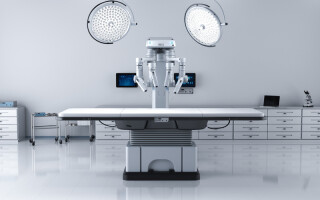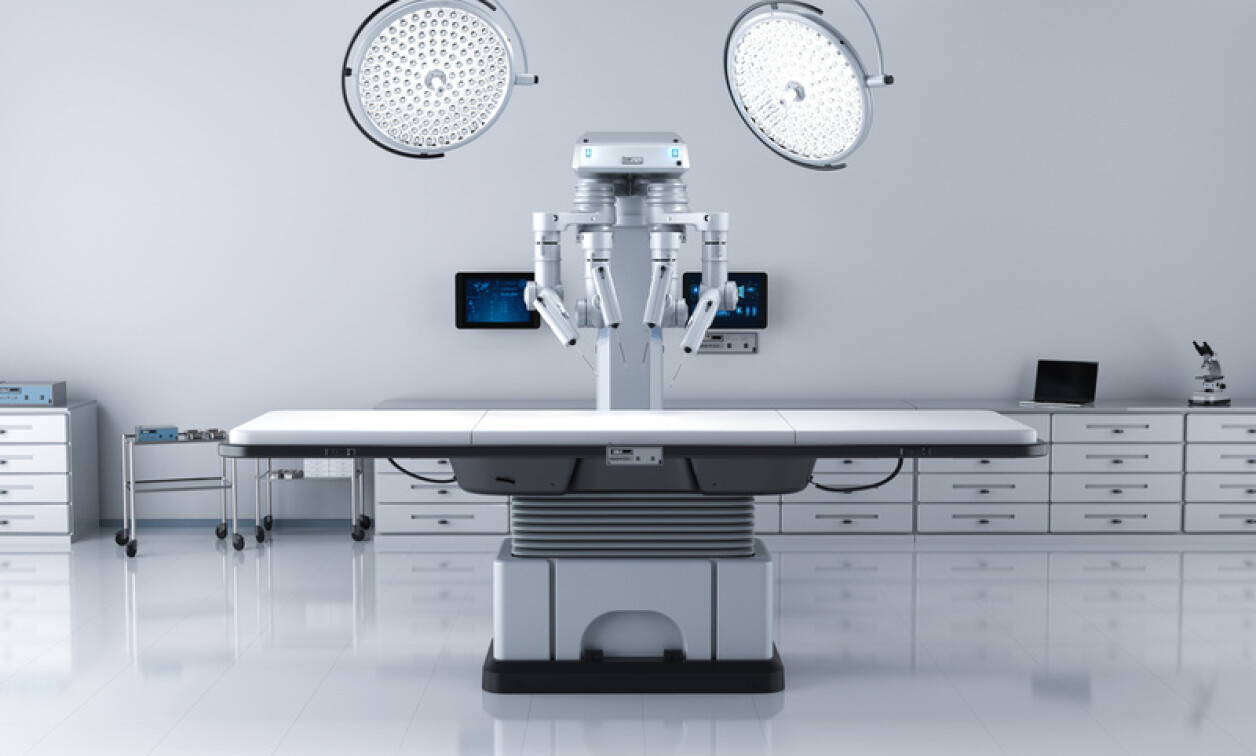September 15, 2025
Story

Robotics is invading. Cities with robotic delivery services, automotive with self-driving taxis, retail, industrial, and even healthcare are all integrating robotics. It seems that interacting with robots is increasingly becoming the norm and, therefore, inevitable for our future.
For example, robots integrated in medical environments may sound tricky, but they’ve actually become quite normal. Not just robots that move around hospitals delivering items from one place to the next, but robots that are specialized to perform specific surgeries.
The Serial Entrepreneur of Robotic Startups
Stéphane Lavallée was introduced to the world of surgical robotics in 1986. While earning his PhD at Grenoble University in France in 1989, Lavallée was tasked to work alongside a robot that would assist him in placing electrodes on the brain of a patient suffering from tremors.
“It was my PhD thesis with developing the first robot used in clinical routine for deep brain stimulation, so for neurosurgery,” said Lavallée, who signified this surgery as the catalyst of his career with surgical robots.
The patient was awake during the brain surgery, and while placing the electrodes, Stéphane and the other professionals saw the tremors cease in real-time. This research marked the development of the first robotic system linked to intra-operative X-ray imaging and used in clinical routine in neurosurgery.
“We did it in three years, we developed a complex system with a robot based on some X-ray imaging to define targets in the deep brain, and we could use it successfully on many patients to implant, to do biopsies, but also to implant electronics,” said Lavallée.
Today, Lavallée owns more than 400 patents and has continued his work in digital surgery and robotics. He created his first startup in 1998 and refers to himself as a “serial entrepreneur of startups.” He’s also the president of MinMaxMedical, a French company focused on the research, development, and manufacturing of critical robotics, navigation, and medical-grade components.
“We created about 20 companies; all are specialized in different applications and technologies of digital surgery and robotics. It’s a little bit more than robotics. It can be sometimes navigation, augmented reality, surgical planning, etc.,” he said.
“And today I’m very proud, because in the south of France, we have now created, with all the companies I co-founded, with my partners, more than 700 jobs from scratch,” he continued. “We are running very fast with a powerful ecosystem with companies like MinMaxMedical, which develops technologies in collaboration with QNX for everything related to the safety of robotics.”
AI and New Digital Tools Reshape the Operating Room
Lavallée defines two categories of surgical robotics. The first category is where robots assist in surgery, for example, with the dexterity of the surgeon. The second is where robots are specially designed to perform a specific surgery, to which Lavallée belongs.
“Patients want robots. Surgeons want robots. That’s very clear. Hospitals want robots also,” he said. “I was considered as crazy. We were as a team, considered as crazy. ‘You know what those guys they want to use a robot on, on patients. You can’t imagine that they’re going to replace surgeons. Really? Are they serious? That’s not possible.’”
But from a healthcare perspective, he believes there are existing technologies to be improved in the medical sector. He affirms that the industry is on track when it comes to this category of specialized surgical robots, while also noting that there’s still a lot of potential and a lot to accomplish, and that existing technologies still need to improve as well.
“Tracking is when you put sensors, trackers, on the robot, on the patient, on the instruments, everywhere. You put those little things everywhere. They are basically the eyes of the robot. They give you the information in real time. Today we use a lot of optical tracking, which is a little bit painful because it has some issues with the line of sight,” said Lavallée.
He also mentions surgical planning as another area that can improve, “because we need to define for each patient what is the best surgery? Should we do surgery first? That’s the first question. We need to help the surgeon decide. Then we need, if he decides to go with surgery, what is the best strategy for this patient?”
According to Lavallée, AI advancements will also continue to be beneficial in this space, mentioning that what may have been the standard 10 years ago is not the same today and that AI is needed for what he calls the “big loop,” where data is taken from the patient to the doctors to better create and understand post-operative measurements.
“That’s really the key we need,” Lavallée said. “We need to close the loop in order to feed the AI system … in order to define what will be for this patient, the best surgical planning.”
Earning Trust in Robotic-Assisted Procedures
Trust in a critical and invasive industry like medicine is paramount. According to Jim Hirsch, VP of the North American and EMEA general embedded market (GEM) at QNX, the real challenge is the regulations. The FDA, for example, requires meeting all certification standards. When compared to other areas where robotics is getting involved, he states that medical is a main driver. But of course, everything goes back to trust.
Robotics in the medical space differs from that in industrial; they’re not nearly as invasive. Robots in factory and warehouse facilities, traditionally, don’t interact directly with humans. Most are working in caged environments, according to Hirsch.
“Whereas in the medical device industry, if you’re leveraging a robot, whether it’s scanning an individual for radiological reasons, or whether you’re actually doing invasive surgery with a surgical robot, obviously, we need to make sure the standards are a lot higher and that the patients are in a safe situation, so that they cannot be harmed,” says Hirsch.
Drilling further into the challenge of trust is connectivity. High-performance embedded solutions providers, like QNX, are tasked with ensuring that connectivity is reliable and that no unpredictable network conditions occur during these potentially dangerous procedures.
Hirsch notes that latency is a key consideration for QNX’s real-time operating systems. Especially with remote locations that rely on wireless connectivity. QNX’s product portfolio consists of its QNX OS for Safety (QOS) and the QNX Hypervisor for Safety, which are products used by surgical robotics manufacturers.
“We’re a large player in the medical device space, whether it’s for surgical robotics or any robotics within any medical device… we’ve been around for 45 years, and we’ve developed a deterministic, a real-time operating system for mission-critical applications, one of which is surgical and non-surgical robotics,” said Hirsch. “So, it’s a natural fit for us to be in these devices, and it’s a natural fit for customers to actually reach out and actually leverage our solutions, instead of having to try and leverage solutions out there.”
He noted that ONX is hands-off when it comes to the onboarding and training process of getting a hospital started with their software technologies. He states that the real experts are their customers. Instead, ONX does what it can to ensure its products meet the expectations and specifications of the healthcare professionals.
When asked where he sees robotic surgery going in the next 5 to 10 years, Stéphane Lavallée says that “one day there will be robots or digital surgery, at least for every specialty of surgery… It’s an invasion. It’s a good invasion of robots.”
Tiera Oliver, Associate Editor for Embedded Computing Design, is responsible for web content edits, product news, and constructing stories. She also assists with newsletter updates as well as contributing and editing content for ECD podcasts and the ECD YouTube channel. Before working at ECD, Tiera graduated from Northern Arizona University where she received her B.S. in journalism and political science and worked as a news reporter for the university’s student led newspaper, The Lumberjack.
